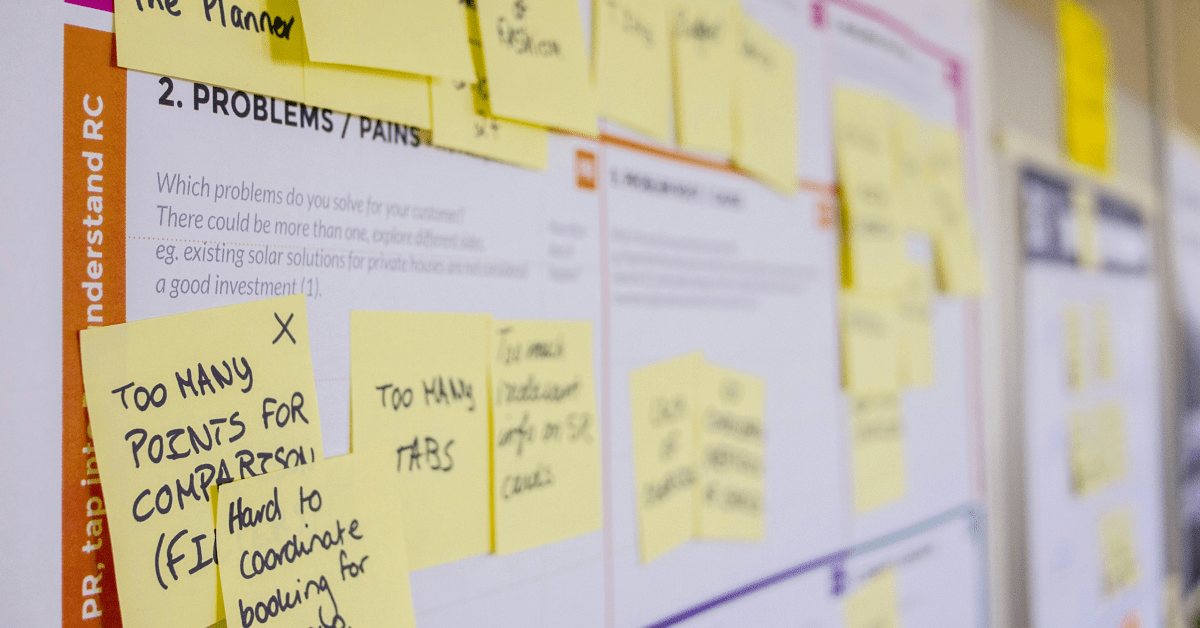Starting a Design System the Right Way
Building a design system isn’t just about organizing components in Figma. It requires careful planning, collaboration, and a clear strategy. Before diving into creating buttons, typography, or spacing rules, it’s essential to follow a system for your system. The key to success is starting small, organizing the process, documenting everything, and continuously refining based on team feedback. A design system isn’t a one-time project. It’s a living, evolving resource that grows with the team and the product.
Where to Begin?
Every design system starts with a few fundamental questions. Are you building for a new product, or are you working with an existing one? Who are the stakeholders, designers, and developers that need to be involved? What are the core foundations that will guide the system? The answers to these questions help define the approach, scope, and priorities for the design system.
Starting fresh with a new product is often easier because there are no existing inconsistencies to manage. However, working with an existing product means dealing with legacy components, technical debt, and the challenge of getting teams to gradually adopt the system. For a new product, the focus is on understanding product goals, defining the brand identity, establishing a modular and scalable system, and setting up collaboration workflows. For an existing product, challenges include auditing current design inconsistencies, aligning multiple teams with different approaches, handling legacy components, and encouraging gradual adoption.
Each approach comes with its own set of challenges, but the key takeaway is that a well-structured plan is essential for success.
The Role of Stakeholder Interviews
Before diving into design, it’s critical to conduct stakeholder interviews to gather insights and align the system with business and product needs. Stakeholders can include product managers, design leaders, engineers, marketing teams, and even users or customer support teams.
For new systems, interviews focus on vision, alignment, and foundational principles. For existing systems, the emphasis is on identifying inconsistencies, improving workflows, and aligning teams. The goal of these interviews is to understand pain points, align expectations, and ensure the system serves the entire team. Without this step, teams risk building a system that doesn’t address real challenges.
What to Learn from Engineers?
A design system is only successful if design and engineering teams work in sync. Before starting, it’s important to understand technical constraints, scalability, performance concerns, and accessibility standards. Engineers can provide insight into how components function across different states, how design tokens map to development frameworks, and how version control is handled.
Designers and engineers need to establish a strong collaboration process. The better they work together, the smoother the implementation will be. A design system that exists only in Figma is not useful. It needs to be properly implemented and maintained in code to provide real value.
Turning Research into a Roadmap
Once stakeholder interviews and technical research are complete, the next step is to synthesize findings and develop a roadmap. A well-planned roadmap ensures the design system is structured, scalable, and aligned with the team’s needs.
The first step is to organize and document the interview findings. Identifying recurring themes and pain points helps determine which aspects of the design system need immediate attention. Once the key insights are outlined, defining design principles becomes essential. Principles such as consistency, accessibility, and clarity help guide future decisions and create a shared design mindset across teams.
Conducting an interface inventory is another critical step. For existing products, this involves auditing all current UI components to identify inconsistencies, outdated patterns, and gaps that need to be addressed. Comparing the current state of design with the desired future state helps prioritize what needs to be standardized or redesigned first.
Building the foundations of a design system starts with colors, typography, spacing, grids, and accessibility standards. These core elements set the stage for the rest of the system. Once the foundation is in place, teams can move on to creating reusable components like buttons, forms, and icons. Patterns, which are groups of components that work together to create consistent experiences, are then developed based on frequently used UI elements.
Internal training is a crucial part of design system adoption. A design system is only effective if teams use it correctly. Running training sessions, creating onboarding guides, and ensuring accessibility for designers and developers all contribute to adoption. Encouraging feedback and making continuous improvements will help the system evolve naturally.
Finally, establishing governance ensures the long-term success of the system. Assigning ownership for maintaining the system, setting up version control, and defining a process for submitting new components and updates will help keep everything consistent and up to date. A design system is never truly finished. It requires continuous iteration and refinement.
Final Thought
Starting a design system requires careful planning, collaboration, and adaptability. Whether you’re building for a new product or optimizing an existing one, the key is to start small, stay organized, and ensure adoption across teams.
If you’d like to discuss this topic further or explore how I can help you build one for your project or your team, feel free to reach out at hello@anitachang.com. I’d love to hear from you!
